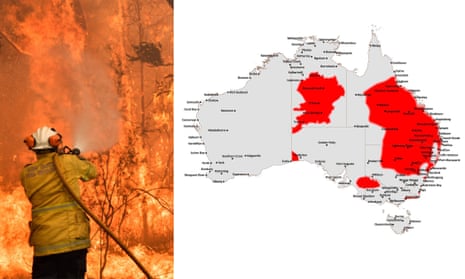Browsing the Needs: Your Guide to Obtaining a BAL Report
Browsing the Needs: Your Guide to Obtaining a BAL Report
Blog Article
The Significance of Bushfire Management in Fire Protection
In the world of fire protection, the significance of efficient bushfire management can not be downplayed. As areas globally come to grips with boosting circumstances of wildfires, the proactive technique to stopping and mitigating these all-natural disasters through calculated bushfire monitoring methods has actually emerged as a vital aspect. Beyond the immediate threat to human life and residential property, the interplay between bushfire monitoring and environmental preservation, community participation, and environment modification presents intricate challenges that demand comprehensive remedies.
Value of Proactive Bushfire Avoidance
Aggressive bushfire prevention techniques are essential in minimizing the devastating influences of wildfires on areas and ecological communities. One vital element of positive bushfire prevention is gas management.
Additionally, creating firebreaks - gotten rid of locations where plants is strategically gotten rid of to develop a barrier to slow or stop the progression of a bushfire - is one more crucial aggressive measure. By executing these strategies, the spread of wildfires can be restricted, shielding both human lives and the setting. Moreover, educating the public ablaze security techniques and advertising area awareness regarding the relevance of bushfire avoidance are crucial elements of proactive techniques. Ultimately, proactive bushfire avoidance plays a considerable role in securing communities and ecosystems from the damaging effects of wildfires.
Duty of Area Involvement in Fire Protection
Involving the area in fire security efforts is important to boosting the performance of aggressive bushfire prevention strategies. Area interaction plays a critical duty in promoting a cumulative understanding of the threats presented by bushfires and the importance of readiness steps. By entailing local citizens, authorities can disseminate important information ablaze security practices, emptying procedures, and early warning systems, equipping people to take proactive actions to safeguard their lives and residential properties.
By fostering a culture of readiness and collaboration, neighborhoods can strengthen their ability to react efficiently to bushfire emergencies, minimizing the influence on lives and residential properties. Eventually, community interaction is a foundation of comprehensive fire security approaches, highlighting the importance of cumulative activity in protecting prone locations from the risk of bushfires.
Importance of Wild Animals Preservation in Bushfire Administration
Preservation of wild animals plays a crucial duty in reliable bushfire management techniques, guaranteeing the security of varied ecological communities and biodiversity in fire-prone regions. Wild animals preservation is vital as it adds to the total strength of environments, assisting in their capability to recuperate and withstand from the impact of bushfires. By preserving environments and securing various varieties, the natural equilibrium within these environments is preserved, which is essential for their long-term health and sustainability.
Furthermore, wildlife conservation likewise helps in lowering the threat and intensity of bushfires. Healthy and balanced communities with unspoiled wild animals populations can function as all-natural firebreaks, slowing down the spread of fires and limiting their devastating potential (BAL Report). Certain animal species, like burrowing animals or birds that spread seeds, play distinct roles in preventing fires or aiding in the post-fire regrowth of environments
Incorporating wildlife conservation into bushfire management methods is not just vital for safeguarding biodiversity yet likewise for promoting the overall health and durability of ecological communities when faced with boosting fire dangers.
Advantages of Strategic Gas Decrease Programs
Strategically implementing gas reduction programs is necessary in minimizing the threat and impact of bushfires in fire-prone regions. These programs include regulated burning, mechanical clearing up, and other approaches to reduce the amount of flammable plants readily available to sustain wildfires. By purposefully minimizing fuel lots in crucial locations, such as close to residential communities or important facilities, the intensity and spread of bushfires can be dramatically reduced.
One of the key advantages of gas decrease programs is the improvement of overall fire strength in an environment. By developing strategic fuel breaks and reducing the continuity of greenery, these programs assist to disrupt the course of a bushfire, making it much easier for firemans to extinguish the blaze and contain. In addition, fuel reduction programs can shield biodiversity he said by avoiding exceedingly extreme fires that can devastate habitats and threaten wildlife populaces.
Additionally, these programs can additionally protect human lives and building by reducing the threat of devastating fires that posture a substantial threat to communities. Inevitably, strategic fuel decrease programs play a crucial duty in positive bushfire monitoring and cultivating a safer atmosphere for both people and nature.
Influence of Climate Modification on Bushfire Threat

Greater temperatures lead to drier plant life, making it much more at risk to ignition. Lowered rainfall in particular areas lengthens drought problems, better increasing the flammability of the landscape. In addition, the transforming environment has actually changed wind patterns and weather, leading to even more irregular fire actions and rapid fire spread.
As the climate remains to change, the frequency and intensity of bushfires are expected to rise, requiring a adaptive and positive technique to bushfire administration. Strategies must advance to represent the changing threat landscape, integrating climate estimates and considering long-term durability in fire administration planning. Addressing the influence of climate adjustment on bushfire threat is essential in establishing effective techniques to protect lives, residential property, and the setting.
Conclusion
Finally, proactive bushfire avoidance, neighborhood involvement, wild animals conservation, tactical Get the facts fuel decrease programs, and consideration of climate change are essential components in efficient fire protection. By executing these strategies, we can better manage bushfire dangers and safeguard both human lives and the environment. Bushfire Management Plan. It is necessary that stakeholders collaborate to prioritize these procedures to reduce the destructive influence of bushfires on environments and communities

As the environment proceeds to transform, the regularity and strength of bushfires are anticipated to increase, necessitating a flexible and proactive technique to bushfire monitoring.In conclusion, positive bushfire avoidance, community engagement, wild animals conservation, critical fuel reduction programs, and consideration of environment change are essential elements in efficient fire protection.
Report this page